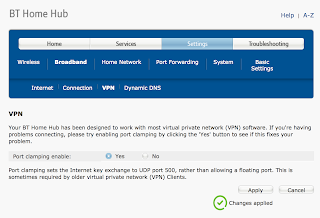Again, this popped into my inbox, following an interaction with IBM Support over a PMR for the IBM BPM product: -
This document features the most requested documents as well as those identified as valuable in helping answer your questions related to the IBM Business Process Manager (BPM) products including WebSphere Process Server (WPS), WebSphere Enterprise Service Bus (WESB), and WebSphere Lombardi Edition (WLE).
<snip>
In the Spotlight
The IBM Business Process Management V8.5 suite of products are available as of June 14, 2013. Download the files by clicking the links in this document.
Data querying takes a long time and process server database tables are using too much disk space with WebSphere Lombardi Edition (WLE) and the IBM Business Process Manager (BPM) products
You see long query times on business process definition (BPD) and Task tables, and your process server database tables are occupying too much disk space.
Configuring SSL for IBM Business Process Manager (BPM) V7.5.x
The Information Center is missing a description of the steps to configure Secure Sockets Layer (SSL) communication between product components.
How can I delete a large number of failed events at once for WebSphere Process Server (WPS)?
The Failed Event Manager (FEMgr) shows a large number of failed events. The failed events must be deleted. Using the "Clear All" button in the Failed Event Manager application, different exceptions (transaction timeouts, OutOfMemoryExceptions etc.) occur. A smaller number of failed events can be selected and deleted at once without problems.
• Follow IBM_BPM on Twitter!
Follow us to receive timely updates on IBM Business Process Manager products, WebSphere Process Server, WebSphere Enterprise Service Bus, and WebSphere Lombardi Edition. Over 3,000 Twitter accounts already follow us. Do you? The following information was in some of our top tweets:
IBM Business Process Management V8.5 products are available Follow us to receive timely updates on IBM Business Process Manager products, WebSphere Process Server, WebSphere Enterprise Service Bus, and WebSphere Lombardi Edition. Over 3,000 Twitter accounts already follow us. Do you? The following information was in some of our top tweets:
The IBM Business Process Management V8.5 suite of products are available as of June 14, 2013. Download the files by clicking the links in this document.
Data querying takes a long time and process server database tables are using too much disk space with WebSphere Lombardi Edition (WLE) and the IBM Business Process Manager (BPM) products
You see long query times on business process definition (BPD) and Task tables, and your process server database tables are occupying too much disk space.
Configuring SSL for IBM Business Process Manager (BPM) V7.5.x
The Information Center is missing a description of the steps to configure Secure Sockets Layer (SSL) communication between product components.
How can I delete a large number of failed events at once for WebSphere Process Server (WPS)?
The Failed Event Manager (FEMgr) shows a large number of failed events. The failed events must be deleted. Using the "Clear All" button in the Failed Event Manager application, different exceptions (transaction timeouts, OutOfMemoryExceptions etc.) occur. A smaller number of failed events can be selected and deleted at once without problems.
• Follow the IBM Business Process Management Products Support Blog!
This blog provides technical information for the business process management family of products. The following blog entries represent some of the recent entries in the blog. You might want to check them out!
This blog provides technical information for the business process management family of products. The following blog entries represent some of the recent entries in the blog. You might want to check them out!
</snip>

